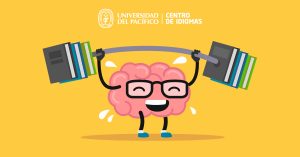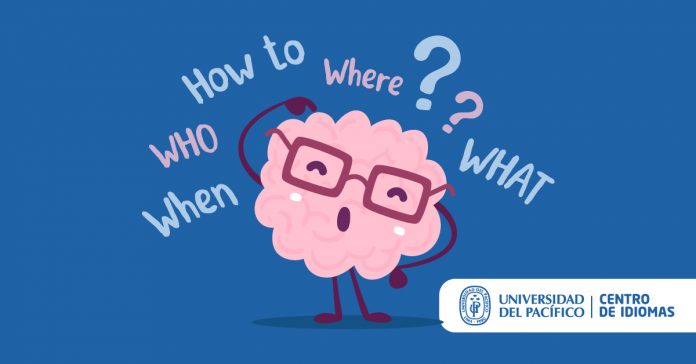Probably, some of the most common myths related to critical thinking are that it is only applied to some fields, that only some people are able to apply it, or that it is not teachable. However, in the current pandemic conditions, it is also understood that it is necessary to ensure the autonomy of students’ thinking. This independence does not seem possible without students’ critical thinking. So, the inescapable questions are:
Are students born with this capacity? How are they going to develop this asset? Do they need help to do so? How can teachers of English help?
These are not easy questions to be answered in a few lines. Nonetheless, it is imperative to begin by understanding what “critical thinking” means, as well as the abilities required to exert it, before doing anything else.
What comes to your mind when asked to define “Critical Thinking?”
Do not feel bad if you do not have a clear and direct definition. In fact, researchers have not finished to characterize it yet and, through the years, some interesting definitions have been used. Here are a few:
“Judging in a reflective way what to do or what to believe” (Facione, 2000)
“Seeing both sides of an issue, being open to new evidence that disconfirms your ideas, reasoning dispassionately, demanding that claims be backed by evidence, deducing and inferring conclusions from available facts, solving problems, and so forth” (Willingham, 2007)
“The intellectually disciplined process of actively and skillfully conceptualizing, applying, analyzing, synthesizing, and/or evaluating information gathered from, or generated by, observation, experience, reflection, reasoning, or communication, as a guide to belief and action” (Scriven & Paul, 2007, p. 1).
If you google the term, you will find many more definitions as well as the approaches developed to do so. In addition to the definition of what Critical Thinking (CT) is, you will learn what it is not. A very important datum to consider is that the ability to think critically is distinct from the disposition to do so; they are, in fact, separate entities (Facione, 2000). So, a person can master CT skills without being disposed to use them. Thus, people do not only have to be able to think critically but also need to have the attitude to do so.
A definition that you may want to consider is that of DeLecce: “Critical thinking means making reasoned judgments that are logical and well-thought out. It is a way of thinking in which you don’t simply accept all arguments and conclusions that you are exposed to but rather have an attitude of questioning such arguments and conclusions. It requires wanting to see what evidence supports a particular argument or conclusion”
What cognitive skills critical thinking encompasses
The process of CT, as many other ones, entails the development of some cognitive skills. Which ones should we consider? According to Lai (2011), researchers agree on the following specific abilities:
| 1. Analyzing arguments, claims, or evidence | 2. Making inferences using inductive or deductive reasoning | 3. Judging or evaluating |
| 4. Making decisions or solving problems | 5. Asking and answering questions for clarification | 6.Defining terms |
| 7. Identifying assumptions | 8. Interpreting and explaining | 9. Reasoning verbally, especially in relation to concepts of likelihood and uncertainty |
| 10. Predicting |
What about the sets of dispositions relevant to critical thinking? Consider these ones:
- Open-mindedness
- Fair-mindedness
- The propensity to seek reason
- Inquisitiveness
- The desire to be well-informed
- Flexibility
- Respect for, and willingness to entertain, others’ viewpoints

There are many other aspects to be considered. For example, background knowledge. Without this, the student will be unable to use a well-constructed criterion since students should be able to identify and cite good reasons for the opinions they express. Those reasons should find support in this knowledge. This is the area which, we, teachers of languages can exploit to help students develop the abilities needed to develop critical thinking. We can use the contents provided to enrich students´ knowledge. Students need to look at an issue from multiple perspectives, but if they do not know much about a topic, they can´t think about it from multiple perspectives. Thus, knowledge is a must.
The last question that comes to my mind is: What doesn´t help to develop or improve CT?
First, we need to understand that merely having knowledge or information is not enough. CT requires students to use higher-order thinking skills and not to memorize data or accept what they read or are told without critically thinking about it. Thus, they need to use the abilities mentioned above.
Just teaching techniques to memorize vocabulary definitions, for example, does not support CT. Teaching the application does. We need to think of students as information users rather than information receivers.
In terms of evaluation, graded assignments, quizzes, or tests or any other standardized format, memoristic recall of a bundle of data should not be promoted. Instead, they should require students to apply their knowledge to new situations, to solve problems, to propose different options, or to identify the example that best applies to a concept taught in class, for instance.
The barriers
I cannot finish this post without sharing some ideas related to the barriers that we may encounter. Probably, the most distressful one is time constraints. We hardly have time to prepare our lessons, so we tend to use shortcuts such as lectures, or objective tests. Unfortunately, we focus more on the contents to be covered rather than on student learning. This trend is reinforced by the obligatory nature of standardized curricula and focus on test scores that the educational system imposes.
Another barrier is the lack of training. It is not a national policy to train teachers in CT methodology. The best we can do is to train ourselves, which we do to help our students´ learning. However, it is not systematic. Thus, we need to start working more on this training. Especially in this pandemic context, we need to empower ourselves to help our students become more independent learners. We need to learn strategies such as making the right questions. A sample could be the one proposed by Brown and Kelley’s book, Asking the Right Questions: A Guide to Critical Thinking,
Sample questions from the book:
What do you think about this?
Why do you think that?
What is your knowledge based upon?
What does it imply and presuppose?
What explains it, connects to it, leads from it?
How are you viewing it?
Could it be viewed differently?
There are many more, but we will need another post. Another set that you can explore can be found in Facione (2015). He organizes the questions taking the cognitive skills into account: interpretation, analysis, evaluation, inference, explanation, and self-regulation.
As I always suggest, do not overwhelm yourself with a lot of information. Start small. Little by little, you will improve your knowledge and methodology and take advantage of this to have even better classes. Happy learning!
References:
DeLecce, T. “What is Critical Thinking? – Definition, Skills and Meaning”. Retrieved from URL: https://study.com/academy/lesson/what-is-critical-thinking-definition-skills-meaning.html
Facione, P. A. (2000). The disposition toward critical thinking: Its character, measurement, and relation to critical thinking skill. Informal Logic, 20(1), 61–84.
Facione, Peter. (2015). Critical Thinking: What It Is and Why It Counts. Insight Assessment. https://www.researchgate.net/publication/251303244_Critical_Thinking_What_It_Is_and_Why_It_Counts
Lai, E. R. (2011). Critical Thinking: A Literature Review Research Report. London: Parsons Publishing, Retrieved from:
https://images.pearsonassessments.com/images/tmrs/CriticalThinkingReviewFINAL.pdf
Scriven, M., & Paul, R. (2007). Defining critical thinking. The Critical Thinking Community: Foundation for Critical Thinking. Retrieved January 2, 2008, Retrieved from URL:
http://www.criticalthinking.org/aboutCT/define_critical_thinking.cfm
Willingham, D. T. (2007). Critical thinking: Why is it so hard to teach? American Educator, 8–19. Retrieved from
http://www.aft.org/sites/default/files/periodicals/Crit_Thinking.pdf










